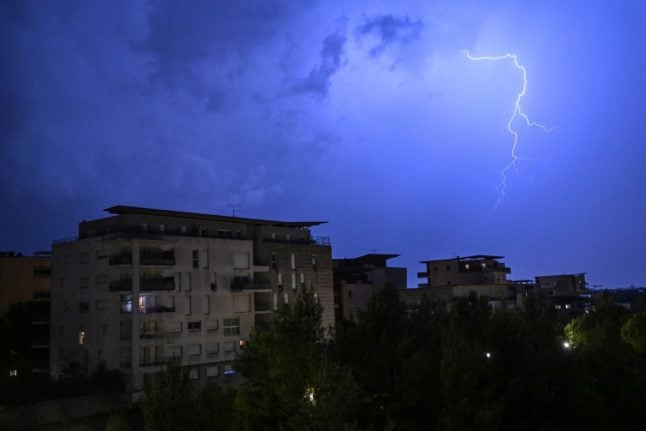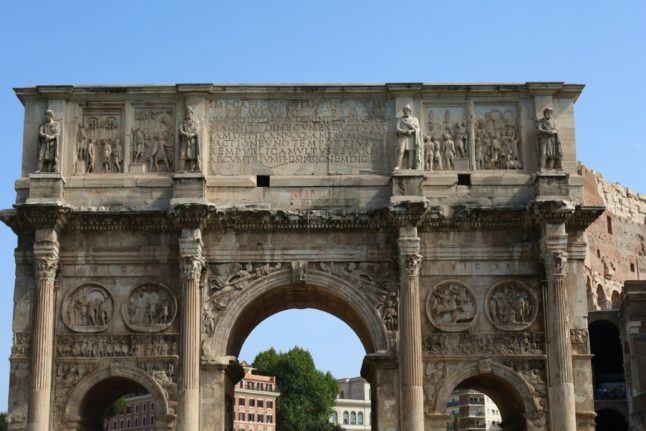Both victims were hit by falling trees, local media reports said.
Four people were injured by toppling trees at the seaside camping site of Marina di Massa, while four others were rushed to hospital in the medieval town of Barga after the car they were travelling in was hit by a torn-off roof, according to local news site Toscana in Diretta.
READ ALSO: How the climate crisis is hitting Europe hard
The civil protection agency prepared emergency accommodation in schools and gyms for those forced from their homes after bad weather toppled trees and tore off roofs in the area.
Several regions reported serious incidents involving both people and property on Thursday.
High winds sweeping through St Mark’s Square in Venice on Thursday dislodged fragments from its famous belltower, according to the AGI new agency.
The city of Milan meanwhile ordered public parks to be closed on Friday and urged residents to avoid leaving their cars under trees.
Photos and videos shared on social media on showed the damage caused to homes and businesses in the Liguria region after severe storms hit the north-western coast of Italy overnight.
Winds of up to 120km/h hit the coast, while heavy rain reportedly caused damage to power lines and the Genoa-La Spezia railway.
The mayor of Sestri Levante, on Liguria’s coast, said homes, businesses and beach facilities had been “heavily hit” and the local authority had “requested a ‘state of calamity’ given the extraordinary extent of the damage.”
#Maltempo in #Liguria, la sindaca di #SestriLevante Valentina Ghio annuncia: "Stabilimenti balneari, attività e abitazioni sono stati pesantemente colpiti. Ci stiamo attivando per richiedere lo stato di calamità data la straordinaria entità dei danni". pic.twitter.com/xQqpecrqfy
— BabboleoNews (@BabboleoNews) August 18, 2022
Hailstones of up to 4-5 centimetres in diameter were reported in the Ligurian provinces of Chiavari and Sestri Levante.
Severe #thunderstorms with intense #lightning processes and #hail phenomena, developed from south-west towards eastern Liguria coastline between 430-515UTC #today in #Chiavari and #SestriLevante were recorded 2 cm and 4-5 cm hail diameter pic.twitter.com/aZzt9i73K1
— CIMA Research Foundation (@CIMAFoundation) August 18, 2022
In Boara, near Ferrara (Emilia-Romagna), a whirlwind (tromba d’aria in Italian) caused the collapse of a construction crane.
No one was reported injured in the incident, though the crane caused serious damage to three houses located in the area.
Maltempo, crolla gru a Boara: le immagini dal drone #maltempo #gru #Bondeno #localteam pic.twitter.com/90MOGgLMf5
— Local Team (@localteamtv) August 18, 2022
READ ALSO: Europe facing record year for wildfire destruction: EU
The extreme weather was being caused by masses of low-pressure air moving south, according to reports.
According to the latest forecasts, extreme weather will continue to affect the north of the country until at least Friday, when the low-pressure area currently wreaking havoc across the northern regions might finally ease off.
The Italian Civil Protection department issued an amber alert for Lombardy and Veneto for Friday, August 19th, whereas a lower-level yellow alert will be in place for all the other regions in the north of the country.
Experts say climate change driven by human activity is boosting the intensity and frequency of extreme weather events, such as heatwaves, droughts and wildfires.



 Please whitelist us to continue reading.
Please whitelist us to continue reading.
Member comments